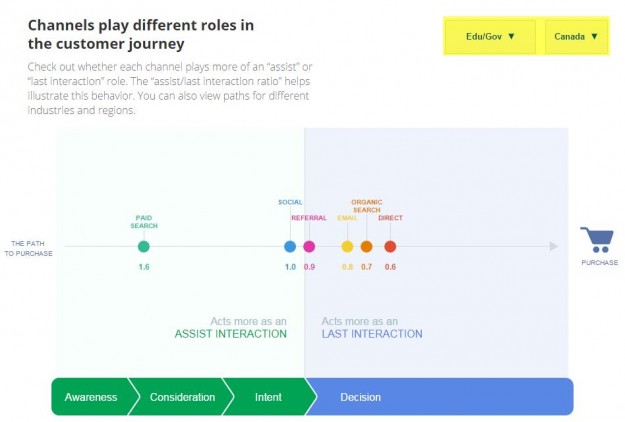For higher ed marketers, the annual cycle of budgeting and marketing planning is once again upon us. In this process, it’s important to evaluate the results of your last year’s recruitment efforts and to look for opportunities to improve your performance and overall program effectiveness. One proven way to do that is to find ways to tighten up on marketing integration, and get more horsepower from the investment that you do make. A well-integrated branding and on- and off-line marketing plan will help to project a clearer brand into the marketplace, attract more prospects and ultimately drive more registrations.

Here are 10 questions to ask yourself to help you evaluate and better integrate your institution’s recruitment marketing:
- Do you apply a customer centric approach to sales, marketing and service?
In today’s marketing environment your prospect/customer should be well integrated into your marketing planning and processes. Persona development helps clearly define your audience, their priorities and subsequently your marketing content and follow-up processes. Contact with them through email, chat, phone, visits, or texts are all important parts of the inbound marketing process as engagement transcends campaigns and your team provides information, help and service.
- How closely does your day to day marketing follow the formal branding and marketing guidelines of your institution?
Depending on the size, setup and politics of your institution you may have an advertising agency of record, a marketing department, and admissions department, College level and departmental level marketers, a web services group and outside suppliers all working on different aspects of your marketing program. I have seen this from both sides of this fence so I know just how hard this can be to manage but at end of the day if everyone is singing from the same song sheet the branding and the message will ring much truer. - Does your marketing connect across ALL channels, creative and campaigns point back to your website, as the central hub of your communications and marketing ecosystem?
For so many reasons, you need to use your site as the integrated front door of all of your messages and activities. Videos, blogs, slideshows, social media, download, analytics, and everything else should pivot from here. - Do you use responsive design to communicate your design, content and message across multiple platforms?
Responsive design allows you to create an integrated and consistent look and feel for your website across desktop, tablet and mobile platforms. This design and content integration provides consistent branding and messaging across all devices. - Can you pass the kitchen table test?
Put all out your collateral out on a table and carefully review it to see how well it all works and flows together. If you haven’t done this in a while, it’s a must, and you will be surprised how much you learn. Style, message, and design creep is usually the normal finding. Is your visual identity clear? Is the messaging consistent? Image Source
Image Source - Do you manage SEO, content strategy and social media plans with one integrated strategy?
These three areas of activity are often siloed off into different areas of responsibility and management. That is a mistake. If you manage and nurture them together, the sum of your efforts will be much greater than the parts.  Do you have a clear content strategy?
Do you have a clear content strategy?
Your content strategy will inform all content you create and how you use it across all of your marketing channels, from social media to email to TV ads. Once you have developed a strong content strategy, your message and content prioirites are clear and much simpler to implement and manage.- Do you leverage PPC and organic search together to amplify their impact?
The benefits of leveraging PPC and organic search are real. Your immediate insights from PPC campaigns can significantly inform your long term SEO strategy. PPC can get eyes on your new programs and produce leads immediately. Page one PPC ads beside page one SEO results will give you more clicks than what they will produce alone. Get them working together and you will see real improvements. - Do you apply lead attribution across your marketing channels to track prospect contacts through multiple touch points so you know what’s working for you?
Properly set up analytics and marketing automation can allow you to track and interact with your prospects, based on their needs, with custom content, using the best channels. A view of a prospects interactions with your marketing facilitates a better understanding of their needs and enhances your ability to provide relevant communications to them. Source
Source
- Do you apply simple and effective marketing metrics across your marketing mix?
Tracking results across campaigns using available analytics tools is critical to managing performance and ROI. It may seem counter intuitive but using fewer and simpler metrics across all of your activities is one way to integrate your tracking and elevate your oversight to a higher, more comparative level of analysis.
The integration of marketing and communications activities in the higher ed context can pose significant challenges, particularly in larger institutions. Regardless, the benefits of better integration should provide strong motivation to both senior and junior managers to effect improvements in how their programs are run. Hopefully these suggestions can help you to do that.
How would you add to this list? How effective have your previous efforts to better integrate your marketing strategy and tactics been?
Additional Information Sources
1) Three ways to know if your marking is truly integrated – this blog post got me thinking about this topic
2) An examination of integrated marketing communication in US public institutions of higher education




 S
S



